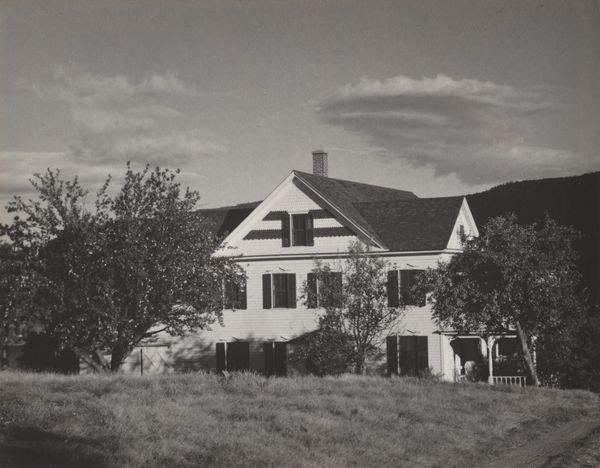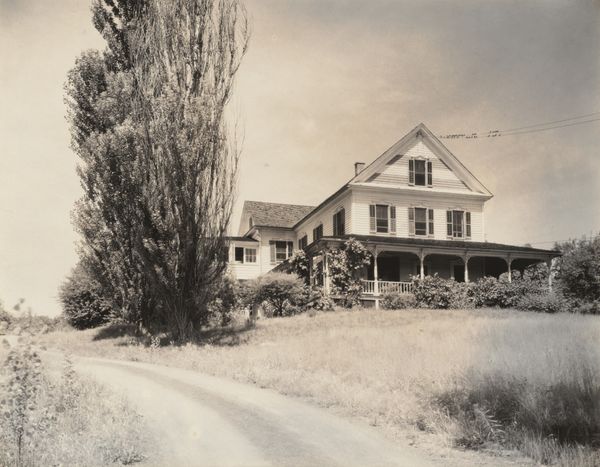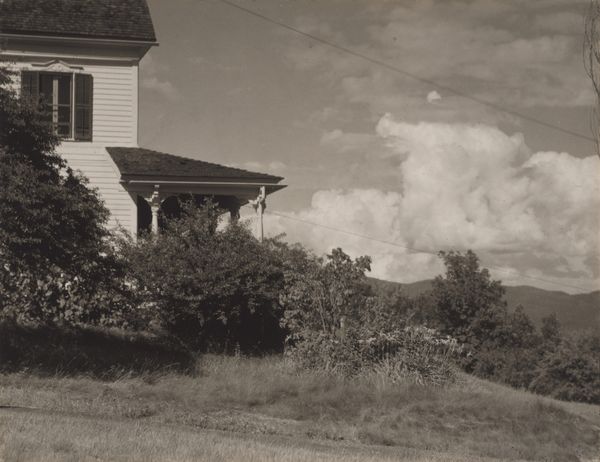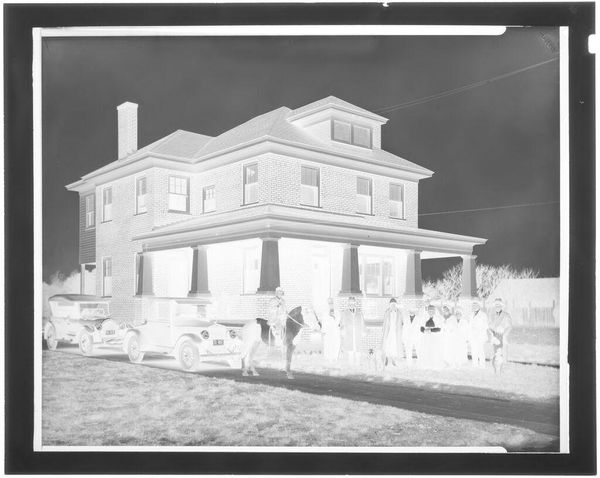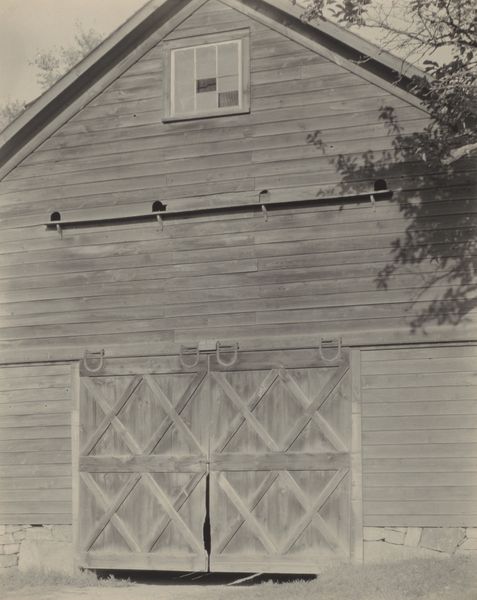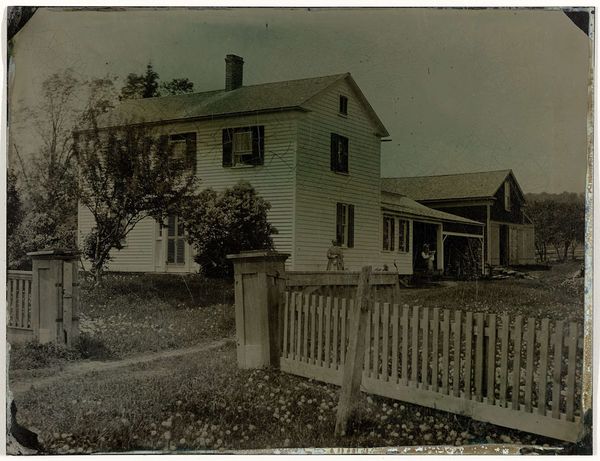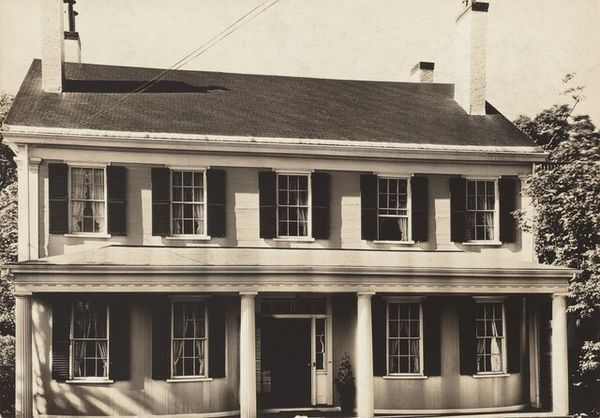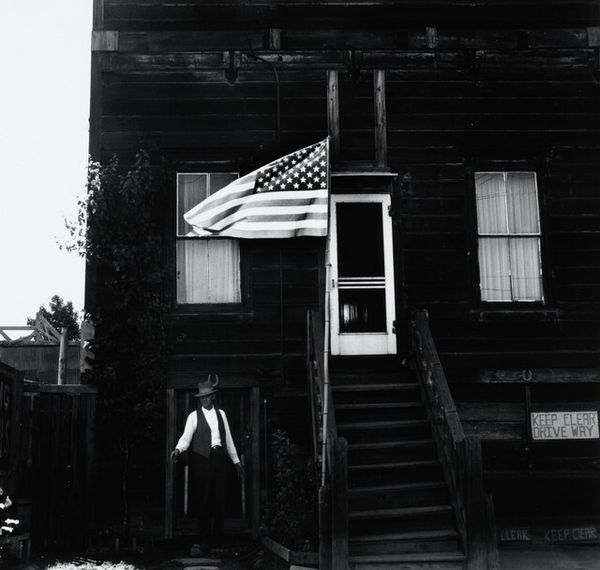
plein-air, photography
#
black and white photography
#
plein-air
#
landscape
#
photography
#
monochrome photography
#
monochrome
#
modernism
#
realism
#
monochrome
Dimensions: sheet (trimmed to image): 11.4 × 9.2 cm (4 1/2 × 3 5/8 in.) mount: 35.2 × 27.2 cm (13 7/8 × 10 11/16 in.)
Copyright: National Gallery of Art: CC0 1.0
Curator: Looking at "House, Lake George," a photograph taken around 1931 by Alfred Stieglitz. There's a stillness that really grabs me. What are your first impressions? Editor: Immediately, it's the textures. The rough-hewn pole contrasts with the delicate clapboard and billowing clouds. There’s a palpable sense of the hand and of natural elements coexisting, or perhaps even vying for dominance in the landscape. Curator: Indeed. This photo offers a compelling insight into Stieglitz's relationship with Lake George, a place where he spent a significant part of his life. Beyond a family retreat, it represented an almost mythic space for artistic exploration, self-discovery and the burgeoning of American Modernism. Editor: And the sheer materiality—look at the weathered wood of the utility pole in the foreground, almost brutal in its simplicity. This isn't just about representing the house; it's about the materials, the stuff of the landscape. How labor shapes the environment, right? It feels connected to farming, to working the land. Curator: Precisely. Think of how Stieglitz championed photography as a fine art, moving away from pictorialism towards straight photography. The details you pointed out reflect that sensibility. We see this raw, unadorned representation, which itself speaks to the American spirit of his time, this need to capture the everyday realities during a period of great change. Editor: It raises questions about progress and nature too, doesn't it? That pole slicing into the scene. It disrupts this otherwise picturesque image. Was Stieglitz making a commentary on industrial incursion into this supposedly idyllic space? The construction of rural life? Curator: That's a reading supported by the date—the early 1930s, marked by economic hardship and shifts in the American landscape. This image can be seen as part of Stieglitz’s effort to capture authentic America amidst such change, both the beauty and the disruption. Editor: It makes you consider how photography as a process informs what we see. This picture doesn't romanticize a rural past. Curator: Exactly. It embraces modernism's honesty about material conditions. I see both personal reflection and larger societal considerations intertwined here. Editor: So, it's not just a picture of a house; it’s a tableau of textures and the friction between built form and raw nature. Curator: Ultimately, "House, Lake George" is more than a photograph, it's a mirror reflecting both Stieglitz's world and America’s changing identity.
Comments
No comments
Be the first to comment and join the conversation on the ultimate creative platform.
